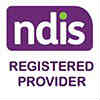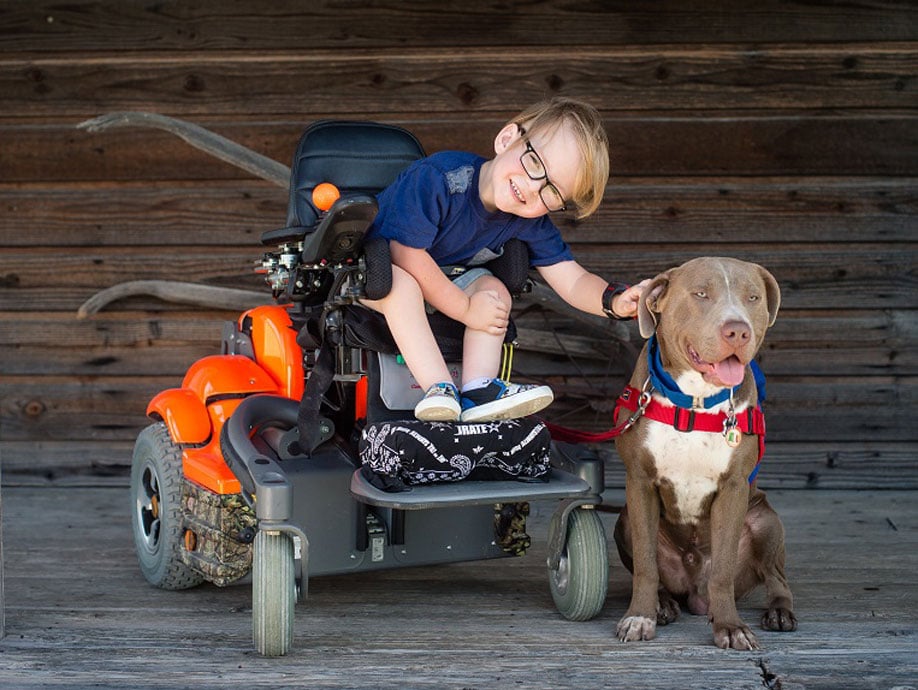Children learn through movement. Through exploring their environment they learn and develop skills. Movement provides sensory feedback and allows children to discover what their bodies can do and how they can make changes to their world. As children begin to roll, crawl and walk their world expands and opportunities for achieving milestones develop naturally.
What about the child who has limited movement, cannot walk, cannot sit independently and/or is dependent on others for movement? Does this limit their ability to learn? Does it delay their overall development? What if they were given the opportunity to be independent in mobility at an age compatible with their peers? According to Butler C., Okamoto G.A. & McKay T.M. (1983), restricting motor development and movement in the first three years of life, has a lasting impact.
By working with families and therapists, GTK has provided the means for children to expand their physical world and move through their environment independently. However, there are still many children who are not given this opportunity. Funding, therapists’ opinions and parents’ perceptions of powered mobility impact upon when powered mobility is introduced. It is often seen as a last resort after all options for walking or manual wheelchair mobility have been exhausted (Kangas, K.1997; Wiart, L., Darrah, J., Hollis, V. & May, L. 2004).
GTK decided to undergo an informal study beginning in 2008, to understand parent perceptions of children receiving powered mobility from GTK whilst under the age of five. Nine sets of parents were interviewed with the following feedback gained.
Perceived Changes
Parents reported an overall increase in their children’s independence. Greater autonomy and ability to explore the environment, in turn becoming aware of a larger environment was a consistent comment. A significant change in social skills was often seen. Verbally the children were interacting more.
Effects of Powered Mobility
Generally the comments were positive, indicating the child was on an equal level with peers and siblings. It was indicated that the child participated more in household chores. Overall an improvement was noted in the child’s confidence, being less reliant on their parents.
Development of Driving Skills
The majority of children taught themselves how to manoeuvre and control their powered wheelchair. Often, children initially explore the sensation of movement by going in circles before learning direction and speed control. Some parents started their children outdoors in a larger space before allowing them indoors to refine their manoeuvring in smaller spaces. In most cases, support was provided by the child’s therapist when needed.
Challenges Experienced
Parents identified some access issues at home (requiring ramp installation) and in the community environment, with difficulties encountered where kerb ramps were not present. Transport was a challenge for some families and new accessible vehicles to transport the wheelchair had to be funded and purchased.
Subsidising the powered wheelchair was difficult in some situations with funding bodies declining to fund the equipment or delaying waiting periods for purchase. Maintenance of the wheelchair that put a child out of action for a period of time often resulted in an upset child due to their reduced independence.
Age of Users and Frequency of Use
The average age of children receiving powered mobility was three years and 10 months but many parents commented that they wished their child had received their wheelchair earlier. Some commented on the fact they had considered power options earlier but were discouraged by therapists or partners.
All children in the survey used their powered mobility everyday. Some, for all activities, whilst others used it for long distances or shorter periods.
Summary
The families we interviewed, although individual and unique, provided universal responses to the benefits of powered mobility in the early intervention years. In the areas of speech, mobility, cognition, socialisation, play and self perception, all comments were positive. All children used their powered wheelchair daily as this gave the greatest level of independence and mobility. Support was adequate and challenges were related to the environment, not the child’s development. Comments from our parents were consistent with the analysis of the literature which adds weight to the notion: ‘the earlier the better’.
Make an appointment today to look at our paediatric range of power wheelchairs.
References
Beaumont-White, S., and Ham, R.O. (1997), Powered Wheelchair: are we enabling or disabling? Prosthetics and Orthotics International, 21, 62-73.
Berry, E.T., McLaurin, S.E. and Sparing, J.W. (1996), Parent/Caregiver perspectives on the use of power wheelchairs. Pediatric Physical therapy, 8, 146-150.
Butler, C., Okamoto and McKay, T.M (1983), Powered mobility for the very young disabled children. Arch Phys Med Rehabilitation, 65, 95-97.
Deitz, J., Swinth, Y. and White, O. (2002), Powered mobility and preschoolers with complex developmental delays. The American Journal of Occupational Therapy, 56 (1), 86-96.
Hardy, P. (2004), Powered wheelchair mobility: An Occupational performance evaluation perspective. Australian Occupational therapy Journal, 51, 34-42
Janeschild, M. (1997), Early power mobility: Evaluation and training guidelines. Pediatric powered mobility. Pediatric powered mobility: Developmental perspectives. Technical issues. Clinical approaches. J Furumasu, Arlington, RESNA, 48-57.
Kangas, K. (1997), Clinical Assessment and training strategies for the child’s mastery of independent powered mobility. Pediatric powered mobility. Pediatric powered mobility: Developmental perspectives. Technical issues. Clinical approaches. J Furumasu, Arlington, RESNA, 33-47.
Wiart, L., Darrah, J., Cook, A., Hollis, V. and May, L. (2004), Mothers’ perceptions of their children’s use of powered mobility. Physical and Occupational therapy in Pediatrics, 24 (4).



